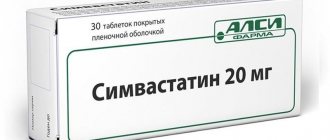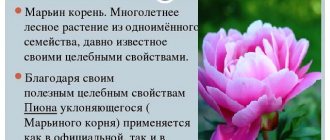Calendula officinalis, benefits of the plant
The annual herbaceous plant calendula, or marigold, is found everywhere. It is cultivated as an ornamental and medicinal plant, using baskets of yellow or orange inflorescences to prepare medications.
Vegetable raw materials contain a sufficient amount of carotenoids, flavonoids, essential oils, and organic acids. The bitter taste is given to the reed flowers by the substance calenden. The plant is rich in vitamin C, enzymes, alkaloids, saponins. Hence the benefit of the plant, which lies in helping with:
- disorders of the digestive system;
- inflammation of the mouth and throat;
- bladder infections;
- diseases of the liver and gall bladder;
- disorders of the heart and blood vessels.
It is useful to take preparations based on marigolds for those who suffer from shortness of breath, swelling, and rapid heartbeat. Women are prescribed products made from the plant during pregnancy and menopause to normalize the nervous system and increase vitality.
Useful characteristics of marigolds
Since ancient times, natural remedies based on berries, leaves and various herbs have been used to normalize blood pressure. Traditional recipes are available to everyone practically free of charge and at the same time have a minimal set of side effects, and are not inferior in effectiveness to traditional tablets and mixtures.
For residents of Ukraine, Belarus, Moldova, as well as Mediterranean countries, the main plant that is used for high blood pressure is calendula, or medicinal marigold. Only flowers are used to make preparations.
Their benefits are explained by the high content of active components in the plant:
- Carotenoids are pigments directly involved in the production of vitamin A;
- Sterols are elements similar in composition to natural cholesterol. When it enters the digestive tract, sterol replaces cholesterol or lowers its level;
- Triterpenoids are glycosides that have an anti-inflammatory effect and increase the healing of ulcers;
- Flavonoids - help relieve spasm of smooth muscles, improve bile production, normalize the excretory system, relieve inflammation, heal wounds;
- Essential oils have an antibacterial effect;
- Coumarin stops inflammatory processes.
Calendula contains carotenoids
The flowers of this plant are rich in useful chemical elements, such as: magnesium, iron, potassium and calcium, in addition, the zinc they contain helps to generally strengthen the immune system, copper improves the regenerative functions of the body, molybdenum prevents the development of caries, and selenium improves the general condition of the cardiovascular system. systems. But most often calendula is used for blood pressure.
Forms and use of the medicinal drug
The pharmacy chain offers various dosage forms containing extracts of calendula flowers:
- An alcohol tincture is prepared from finely chopped marigold inflorescences. They are infused with 70% ethyl alcohol. The liquid is bottled in dark glass bottles; it has a yellowish-brown color, a specific smell and an unusual taste. The tincture is used to treat bruises, cuts, and eczema. It is used to lubricate damaged areas of the skin. Having prepared a solution with the addition of tincture, use it for rinsing for stomatitis, tonsillitis, and pharyngitis. To do this, take 1 teaspoon of tincture per glass of water. Use a product to treat the cervix when erosion is diagnosed. 20 drops of tincture are taken orally before meals as a choleretic agent.
- Decoctions and infusions of water are prepared from dried inflorescences at home. In addition to solutions for rinsing the throat and mouth, the products are used as a medicine for blood pressure. It helps those who have stones or sand in the bladder. The infusion calms nervous fever and insomnia. It effectively relieves the symptom of dizziness. Calendula-based products are useful for inflammation of the female reproductive system: erosion, colpitis, proctitis. They wash the affected areas when conjunctivitis and stye occur. Use decoctions and infusions of marigolds to wipe the skin of the face. Herbal remedies reduce sebum secretion and heal. Rinsing your hair in aqueous solutions of the plant will help get rid of dandruff.
- Calendula-based ointments are used to regenerate the skin and relieve inflammation. By killing pathogenic microorganisms, the components of the ointment promote the healing of cracked heels, wounds and cuts on the skin. They are used for acne and seborrhea. Varicose veins are treated with medicinal ointment applications. The drug is used to heal cracks in hemorrhoids.
All products based on calendula baskets have a beneficial effect on the human body. The medicine has no side effects.
Allergic reactions may occur due to individual intolerance.
Effect on blood pressure
Hypertensive patients with high blood pressure are advised to include calendula tincture in the treatment of the pathological condition, as it can help get rid of the symptoms:
- dizziness;
- headache;
- general weakness;
- mood swings;
- increased fatigue.FFYFFf
Having a beneficial effect on the functioning of the heart muscle and the condition of blood vessels, calendula tincture normalizes blood pressure levels. Regular use of the medicine not only lowers blood pressure, but also slows the heart rate, normalizes breathing rate, and improves the patient’s standard of living. The use of a herbal remedy for pressure is carried out with the preparation of the medicine in accordance with the instructions, observing the proportions.
How to properly use calendula for blood pressure
Patients with high blood pressure are advised to include calendula-based medications in their therapy as additional remedies.
The pharmaceutical tincture of the plant is taken in drops, 10-12 drops per half glass of water. Use the product regularly, three times a day. Do not forget that addiction may occur due to the ethyl alcohol content in the tincture.
Therefore, you can replace the alcohol solution with an aqueous infusion. Healing tea from calendula flowers is prepared daily, drinking a cup in the morning and evening. You can drink it by adding strawberry leaves and hawthorn flowers. Infuse the medicinal mixtures for 1-2 hours.
Procurement of plant raw materials
The color of calendula contains the maximum amount of active components. It is necessary to collect in the morning at the moment when 50% of the reed flowers have opened. Several inflorescences appear on one plant bush. They open at different times. Therefore, over the entire summer period, raw materials can be collected from 10 to 20 times.
The recommended collection frequency is once every 5 days. The baskets must be cut off at the very base. When you get home, cover a food tray with newspaper and lay out the collected inflorescences in a thin layer. Dry in a dark, well-ventilated area.
It can be stored in dry glass jars or linen bags for no more than 2 years.
Medicinal tincture recipes
You can prepare plant-based medicines yourself at home. To do this, you only need to purchase raw materials at the pharmacy or collect material from the flower bed where medicinal marigolds grow. Baskets of inflorescences are torn off in the morning, when they are at their peak. The optimal collection time will be June-July. The collected flowers are placed under a canopy to protect them from exposure to sunlight. If raw materials are laid out indoors, it should be well ventilated.
To prepare medicines from a plant, it is necessary to follow proportions and certain rules.
On alcohol
You can prepare calendula tincture at home. To do this, take a dark glass bottle, place 10 grams of plant material in it and fill it with 0.5 liters of vodka. It is better to replace vodka with pure ethyl alcohol with a strength of 70%. The solution is thoroughly mixed and placed in a dark, cool place for 1-1.5 weeks. During this time, shake the product periodically.
When the tincture becomes a rich yellow color, it is filtered and stored in the refrigerator. To treat hypertension, take from 15 to 30 drops of tincture and dilute it in water. Take medicine to lower blood pressure at least 3 times a day.
Infusion on water
For those who cannot tolerate alcohol tinctures, you can prepare a healing remedy in water:
- 20 grams of dried marigold baskets are placed in a vessel.
- Pour the raw material with boiling water in an amount of 400 grams.
- You need to insist for at least 2-3 hours.
- Strain the drug and take 200 milliliters in the morning and evening.
- The course of therapy with calendula infusion is 30 days.
It is best to infuse the medicine in a thermos.
To prepare decoctions, you need to take 20 grams of marigold inflorescences, pour them with cold water in the amount of 3 glasses. After 8-10 hours, boil for 5 minutes and leave for half an hour. Take the finished product 5-6 times a day, dividing into equal portions.
Medicinal collection for hypertension
Calendula combines well with other herbs that serve as medications for hypertension.
An antihypertensive collection is prepared by mixing in equal quantities the inflorescences of hawthorn, azure cyanosis, motherwort, gillyflower, adonis and marigold. 1 tablespoon of herbs is poured with 25 milliliters of boiling water. After infusion, strain for 1 hour. 1 hour before meals, drink a third of a glass of the drug. You can add wild strawberry leaves to the collection.
A mixture of crushed chamomile flowers, calendula, motherwort herb, string, and valerian roots moderately reduces elevated blood pressure levels. Dill seeds, currant leaves, and viburnum are also added. 2 tablespoons are poured with boiling water in an amount of 500 milliliters. After 2 hours, filter the drink, add honey and sugar to taste. During the day you can drink all the healing liquid in equal portions.
Each component of the proposed herbal mixtures has an effect on the human body.
They prefer to use wild strawberries when it is necessary to dilate peripheral vessels and clear them of sclerotic plaques. Motherwort, also Adonis vernalis, are needed to calm the nervous system and normalize the heart rate. Dill fruits are useful for atherosclerosis and arrhythmia. Hawthorn is considered the best remedy for strengthening the heart muscle. Jaundice is used as a cardiac remedy for neuroses, and cyanosis will help stop stomach pain if the patient has gastritis or an ulcer.
Before preparing the preparations, hypertensive patients need to know the body’s reaction to each herb.
With black currant
A recipe for infusion of marigolds with blackcurrant leaves is popular among those who suffer from arterial hypertension.
For the medicine, take 40 grams of calendula inflorescences and 10 grams of currant raw materials. Add 20 grams of wild strawberry leaves. The plant material is poured with a glass of boiling water. Cover the container with a lid and leave for 30 minutes. Healing tea is well steamed in a thermos. All that remains is to filter the infusion and drink the aromatic drink 30 minutes before meals in the amount of 3 tablespoons.
Black currant leaves, together with calendula, will eliminate oxygen deficiency in tissues, which accompanies a rise in blood pressure. And calendula will also relieve headaches.
Tincture with valerian
Valerian roots in tablets are prescribed as a calming agent for the nervous system of patients with hypertension. You can prepare your own medicine using crushed valerian root and baskets of marigold inflorescences.
An alcohol tincture can be prepared from the collection of valerian root and calendula flowers in a ratio of 1:5. Infuse the medicine in a dark place for 7 days. It’s easier to just mix pharmacy tincture of valerian and calendula in equal quantities. Take a teaspoon of medication before bed.
For the infusion you need 40 grams of marigold flowers and 30 grams of valerian root. Take 10 grams of plant material per 1 glass of boiling water. To infuse the drink better, you need to keep it covered for 1-2 hours.
The finished infusion should be drunk 10 milliliters before each meal 4 times a day. Therapy with a sedative collection is 1 month.
Using calendula for hypertension: does the use of tincture work?
The goal of treating patients with hypertension (HTN) is to lower blood pressure and maintain it at an optimal level. Depending on the stage of hypertension, the goal is to normalize blood pressure or reduce the severity of symptoms. With the help of modern drug treatment regimens, it is possible to obtain the desired result quite quickly.
Difficulties arise in maintaining what has been achieved. Calendula acts slowly, but the effect lasts for a long time.
Therapy based on medicinal plants affects the pathogenetic links of hypertension and provides hypotensive, antispasmodic, diuretic, sedative, anti-inflammatory effects, improves blood rheology, regulates microcirculation and metabolic processes in the vascular wall.
Herbal medicine is indicated for patients with stage I hypertension and mild arterial hypertension. For this category of patients, it can be used as the main one, periodically combined with drug treatment.
Calendula olficinalis is a herbaceous annual plant of the Asteraceae family. It has a high stem (42-70 cm), the flowers are collected in large inflorescences with orange-yellow petals. Due to its many healing properties, calendula is widely used for both external and internal use.
Chemical composition of calendula:
- Carotenoids (up to 3%) – carotene, lycopene, violaxanthin, fravochrome;
- Flavonoids – narcissin, rhamnetin, isoquercitrin;
- Essential oils (0.02%);
- Saponins;
- Resins (3.5%);
- Binders;
- Mucins (2.6%)
- Inulin;
- Organic acids (malic, salicylic, pentadecyl);
- Phytostearin;
- Alkaloids;
- Ascorbic acid;
- Coumarins;
- Phytoncides;
- Triterpinoids;
- Phytosterols;
- Microelements (Ca, Fe, Mg, Cu, Mo).
Pharmacological effects of calendula:
- Anti-inflammatory;
- Wound healing (accelerates tissue regeneration), prevents the formation of keloid at the site of injury;
- Bactericidal;
- Cardiotonic;
- Hypotensive;
- Antispasmodic;
- Sedative;
- Cytoprotective and membrane stabilizing, antitumor;
- Improving liver function;
- Reducing cholesterol.
The use of calendula tincture for blood pressure is especially effective in women during menopause, in patients with symptomatic hypertension caused by pyelonephritis, glomerulonephritis, and psychogenic increases in blood pressure in patients with VSD.
Despite the lack of toxic effects on the body of calendula, there are contraindications to the use of tincture:
- Allergic reactions;
- Individual intolerance;
- Arterial hypotension;
- Intracardiac conduction disorders, bradycardia;
- Kidney stone disease;
- Chronic renal failure;
- Pregnancy, lactation period;
- Decompensated heart failure;
- Severe cerebral atherosclerosis, history of stroke;
- Chronic alcoholism;
- Age up to 12 years.
The mechanism of the effect of calendula extract on blood pressure
The use of calendula tincture for hypertension has a moderate effect and is used as part of complex therapy for hypertension of I and II degrees, its mild symptomatic form and VSD.
The carotenoids and phytosterols contained in calendula prevent the formation of “bad” cholesterol and reduce the risk of coronary artery disease and myocardial infarction.
Flavonoids are able to regulate the permeability of the vascular wall, improve its elasticity and prevent sclerotic lesions. Saponins have a diuretic effect. Organic acids improve microcirculation and regulate vascular tone.
Phytocoumarin reduces blood viscosity. Alkaloids depress the nervous system and normalize the condition of smooth muscle fibers.
The hypotensive effect of calendula flowers is ensured by:
- Decrease in total peripheral vascular resistance;
- Decrease in heart rate;
- Weakening of arteriolar tone;
- Increasing the elasticity of blood vessels;
- Decrease in circulating blood volume;
- Normalization of rheological parameters;
- Helps eliminate the stress factor causing hypertension.
How to properly prepare calendula tincture?
To normalize blood pressure, an alcohol infusion, a decoction, a 20% flower extract in alcohol, and a combination of medicinal plants with calendula are used.
A ready-made alcohol tincture of calendula for blood pressure for internal use is sold in pharmacies. Homemade recipe: dried flowers (collected in July-September and dried at a temperature of 430C) are poured with 70% ethyl alcohol in a ratio of 1:10 in a dark container and kept for 15 days.
A decoction is prepared from 2 tablespoons of flowers, filled with 2 glasses of water. Keep the mixture in a water bath for 15 minutes, then cool and strain.
Combined collections of calendula with motherwort, hawthorn, mint, lemon balm, strawberries, currants, valerian, and rose hips are also widespread. The ingredients are mixed in equal proportions. 4 tbsp. The resulting mixture is poured with 2 cups of boiling water for several hours.
Methods of application and dosage for hypertension
When prescribing herbal medicine for patients with hypertension, pay attention to:
- Diastolic blood pressure level;
- Variability of pressure throughout the day;
- Presence of target organ damage;
- Individual sensitivity to medicinal plants.
Alcohol tincture is consumed 30 minutes before meals. A single dose is 30-45 drops diluted in water. The course of administration is 1 month, followed by a break of 1 week, after which the course is repeated. The interval between the use of calendula and other medications should be at least 1 hour.
Take the prepared decoction half a glass 2-3 times a day 15-30 minutes before meals. The medicine should be shaken before each use.
Throughout the entire course of treatment, to increase effectiveness, it is advisable to adhere to a diet, limit the consumption of salt and animal fats, and stop smoking and drinking alcohol.
It is worth remembering that the risk of side effects increases with uncontrolled and continuous treatment. In case of a significant overdose, a reverse increase in blood pressure, headache attacks, and nausea are possible.
For what additional purposes can you take calendula tincture?
Calendula tincture has broad therapeutic activity.
For local treatment:
- Cracks in the skin;
- Herpetic rashes in the blistering stage (10% oil tincture);
- Oral infections – stomatitis, gingivitis, periodontal disease (20% tincture);
- Infectious diseases of the oropharynx - sore throat, tonsillitis, pharyngitis, laryngitis;
- Pustular rashes on the skin, burns, trophic ulcers;
- Gynecological diseases - cervical erosion, trichomonas colpitis, thrush;
- Hemorrhoids, anal fissures, proctitis, paraproctitis.
Internal use as part of complex therapy:
- Chronic pathology of the gastrointestinal tract - gastritis, colitis, enterocolitis, gastric ulcer and duodenal ulcer;
- Hepatitis, cholecystitis, cholelithiasis, biliary dyskinesia;
- Kidney stone disease, pyelonephritis;
- Sleep disorders;
- Menopausal cardiomyopathy.
Calendula is also widely used in cosmetology as an effective drug in the treatment of acne, to restore skin elasticity, and as a hair growth stimulator. In dietetics, the flower is used as an aid for weight loss.
conclusions
It is worth remembering that medicinal plants are not able to quickly lower blood pressure (necessary for hypertensive crises, refractory hypertension, stage III hypertension). In such cases, strictly drug therapy is preferable.
When treating stage I hypertension, one should strive for the possibility of completely abandoning synthetic drugs.
It is advisable to use various combinations of calendula with other plants, alternating the composition of herbal medicine every 3-4 months.
Source: https://cardiograf.com/napor/produkty/nastojka-kalenduly-ot-davleniya.html
Contraindications
Although calendula tincture is harmless for most people, it should be taken with caution for those who suffer from chronic diseases of the digestive tract. If you have a stomach ulcer or gastritis, the alcohol solution will irritate the mucous membrane and lead to increased pain.
It is not recommended for pregnant women to take calendula tincture. Excessive use of the medicine will cause exacerbation of toxicosis, vomiting, and frequent urination.
Ingestion of marigold products is prohibited for children under 12 years of age, as well as for hypotensive patients and patients with chronic heart disease.
An infusion of the plant is relatively contraindicated for people with gallstones, as it can affect the movement of stones and blockage of the bile ducts.
Do not forget about the occurrence of allergies to herbal remedies. Itching, redness, and rashes on the skin become the reason for refusing to use calendula tincture.











